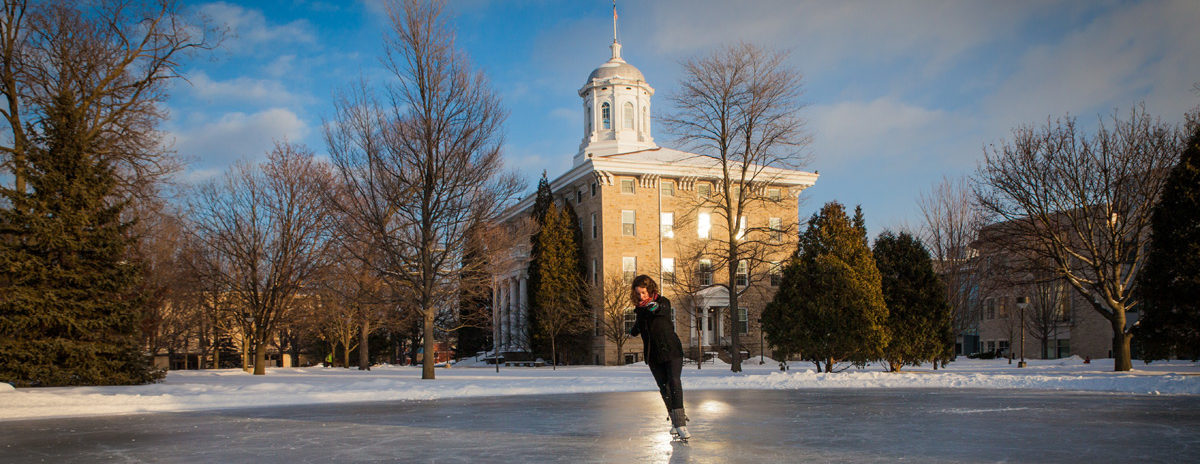This one’s for you parents out there.
I think I might know what you may be thinking…
As a former Parent of a College-Bound Student (it’s a real title, kind of like “Queen of England”), I’ve been where you are right now.
Twice.
Five years ago (with my oldest daughter) and three years ago (with my son), I was anxiously sitting in the when-will-those-college-admissions-envelopes–finally-arrive-and-what-news-will-they-bring seat. (If the truth be told, I wasn’t really doing much sitting. Rather, I was running around getting ready for the holidays, reading the Lawrence applications assigned to me, and listening for the mail truck to roll down my street.)
Even though college admission is my profession—which means I’m supposed to have a pretty firm handle on “how this process works”—these were MY OWN CHILDREN going through this process, which meant that most of my professional perspective sat on the sidelines while the mother in me took center stage. Like any other parent, I was excited and proud of my kids. If I’m being honest, I was nervous for them, too.
What if they didn’t get in?
What if they did?
I knew that the size of the envelope mattered. Big ones meant good news. Small ones… well, I didn’t want to go there, but I wanted to be prepared for it.
For those of you going through this for the second or third or seventh (whew!) time, you already know what I’m talking about. For those of you who are newcomers to this process, here is a quick intro to the three types of letters colleges generally send—presuming the college still does things the old-fashioned way like Lawrence does by using paper, envelopes, and stamps:
The “Congratulations, you’re in!” letter. Hooray! The letter we usually* want our children to get. It’s an opportunity to put a school in the “this might be my new home next fall” pile… and start a whole different kind of planning.
*I say “usually” because sometimes—for various reasons that we might never say out loud—we may hope our children don’t get into a particular college. (For example, it might be really really far away… like anywhere farther away than the home in which I have raised them…)
The “Not quite yet” letter, which usually says something like, “The Admissions Committee has decided not to make a decision on your application at this time,” and then describes their process about how they are deferring their decision so they can consider the application along with a different pool of candidates.
This piece of news is neither good nor bad; it’s procedural. It usually means that the Admissions Committee wants to get some more information (fall term or semester grades, an interview, a box of chocolate chip cookies, etc.) from the applicant. Some deferred students will ultimately get the good news letter. Some will not. Some will take themselves out of the running before that college ever re-visits their application. A deferral is not a time to panic, but a time for students to reach out to the admissions office to see what else they might want to provide in order to help that admission committee come to a decision that delivers the desired results.
The “We regret to inform you…” letter. We don’t even need to read the rest of the letter, because we know what it’s going to say: Ugh. But it doesn’t mean that we parents won’t find our blood temperatures rising to a simmer or boil, because—really?—how could this admissions staff not see the good qualities and potential in my child? Who do they think they are?
“They” are my colleagues. I have been on that admissions staff, and I can tell you that most of us did not get into this profession because we like saying “no” to people. We agonize about these decisions each year. In the case of Lawrence, I know that the reason we choose not to offer admission to particular students almost always lies in our collective belief (and it is a group of people who must share the belief) that the students, for reasons as unique as each of them, are not likely to be successful in our academic environment, no matter how much we may like them as people and want them at our university. To knowingly put students into situations where they are highly unlikely to be successful would be irresponsible on our part.
I can tell you, after all the waiting, those letters did finally arrive at my house (and with a couple, I know I hugged my mailman). Most of them elicited happy dancing in my kitchen, phone calls to relatives—and, at least for me, because I am a crier—tears of joy (with some of the letters) and tears of frustration with some of the others. As a family, we learned a lot about each other during the college search months and before I could blink an eye, I was crying (again), this time as we drove away after dropping each of them off at their freshman dorms, which, whether they are in the same city or a time zone or two away, are still too far away from their bedrooms upstairs for my taste. I am so proud of them, and they are thriving.
There I go again. (Did I mention that I am a crier?)
This is an exciting time for you and your child. I encourage you to embrace each step of the process (even the tough ones), enjoy these last few high school months, and feel free to contact me (or any of my colleagues in the Lawrence Admissions Office) if we can be of assistance to you.
Carin Smith
Lawrence University Regional Admission Director



